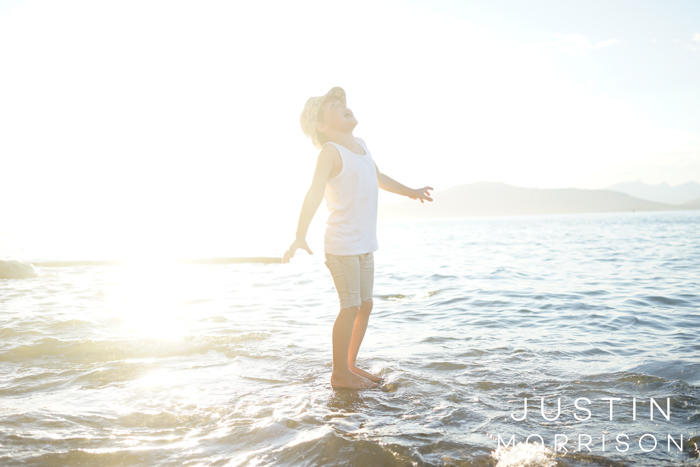 Today we bring you part 2 of our photography fundamentals series. In Part 1 of this serieswe looked at the basic equipment you need to get started; today we’re going to talk about the next most important thing you need to make a great photograph: light.
Today we bring you part 2 of our photography fundamentals series. In Part 1 of this serieswe looked at the basic equipment you need to get started; today we’re going to talk about the next most important thing you need to make a great photograph: light.
Photography Needs Light
The significance of light in photography really cannot be overstated, because without light, there simply is no photography. When we photograph an object what we are really doing is recording the amount (and quality) of light that is being reflected by that object.
Primary Light Source
The first thing you should do when you decide to take a photograph is ask yourself this question: what is my primary light source? Whether you’re a seasoned professional or you are just starting out in photography, asking this question will save you a lot of head-scratching and heartache. If the answer is “I’m not sure” then it’s likely that you’re about to make an image that is much less effective than it could be.
Common Light Sources
So what are some of the common light sources that we are likely to use in an everyday situation? The most common is the sun. On a cloudy day, you’re dealing with the entire sky, where the clouds are acting like a giant softbox for the sun (I’ll talk more about softboxes in a bit). You might also use a white wall off which the sun is reflecting, or the blue sky when you work in the shade of a building. Indoors a window is your best option, or you might use a lightbulb at night.
Natural Is Great
My preference is almost always to use natural light if possible, because personally I like images that feel as natural as possible, in every respect. But even when we shoot in natural light, that doesn’t mean we have to just accept the light conditions as they are. We should always try to figure out how we can use what’s available to us in the best possible way.
Sunny Days Are Tricky
For example, imagine you’re out on a beautiful clear day and the sun is high in the sky. It might seem like the perfect opportunity to shoot some portraits of your kids. In fact, a high sun is not ideal to shoot people, because the light is quite harsh, (or ‘hard’ as photographers say) which means it creates deep shadows and strong highlights. You will often notice that the eyes are obscured by deep shadows, creating so-called ‘panda eyes’. By the way, I always ask people to take off their sunglasses for photographs, because so much of the expression is in the eyes.
Seek The Shade
The best thing you can do in this situation is find a shady spot, out of the sun. This could be the side of a building for example. You’ll probably want your subject to face away from the building, however, unless it’s a white building. Always bear in mind not just the source of your light, but the direction from which it’s coming. If your light source is a window, you’ll want to position your subject so that the light entering the window is landing on their face. If they put their back to the window you’ll probably end up with just a silhouette.
Underexposing
That brings me to one of the most common problems I see when people take a photo and it doesn’t turn out the way that they had hoped. It’s usually because there is a strong light source behind the subject, and the subject appears underexposed in the final image. For example, when you take a photo of someone in front of a beautiful sunset. The primary light source is the sunset itself, so if your subject has their back to it, then none of that light is illuminating the face. If you turn them towards the sunset, and get in nice and close, then you’ll be able to make a stunning portrait, because the light has three important qualities: it is soft, it is directional, and it is warm.
The Temperature Of Light
The colour temperature of light is something we don’t often think about in our everyday lives, but we are nonetheless instinctively aware of. If I refer to the warm light of a sunset, you’ll know exactly what I mean, and similarly if I refer to the cold light of a laboratory. There are actual numbers behind these effects, and the reason they matter to us as photographers is because the temperature of the light lends an emotion to a scene that we can manipulate to our own ends. In the most basic terms, images with a warm hue give us a warm feeling.
 The Shade Is Cool
The Shade Is Cool
You’ll find that images taken in the shade on a sunny day appear a little bit cool. That’s because our light source is the blue sky. There are two ways we can influence this effect. We can either a) change the white balance setting on our camera, or b) change the white balance afterwards using computer software. Personally I tend to do a bit of both, but I always shoot in RAW mode so that I have lots of data in my file which gives me the most leeway to alter the white balance later.
Artificial Light
If you’re shooting in a situation where there is no natural light available, you’re going to have to resort to generating light, and the most common tools that photographers use to do this are studio strobe lights and speedlights. Speedlights are flash units designed to be mounted on top of your camera, but they can also be used off camera, which is my preference. The light coming from an unmodified speedlight or strobe is very hard, and photographers often use softboxes or umbrellas to soften the light and make it more flattering for human subjects. They make the light source appear much larger and more diffuse. You can also bounce your light off a light coloured wall to achieve a similar effect. Working with off-camera lighting takes a lot of practice, but it opens up a whole world of new opportunities.
Be Intentional
Those are just a few ideas to help you get started thinking about how to use light effectively. Really, you could write a whole book on lighting for photography, and indeed there are a number of books on the topic that are well worth reading. I think the most important point to take away from this piece is that you need to be intentional in the way you use light, it needs to be right at the forefront of your mind when you put that camera to your eye.
If you have any questions, I’d love to hear them, so please feel free to leave a comment below.



